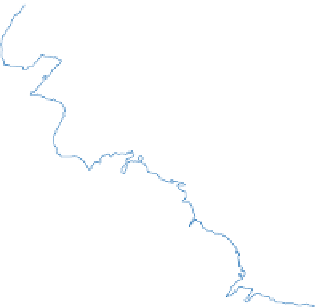Geoscience Reference
In-Depth Information
Figure 7.15
Easterly waves (a) Surface
pressure, (b) 500 mb
cross-section.
(a)
H
L
Surface
pressure
40°
(b)
H
500 hPa
streamline
flow
L
40°
Height
(km)
(c)
7.5
6.0
4.5
Vertical
cross-section
E - W
Top of moist layer
3.0
1.5
0
250
0
250
500
km
Ahead of wave trough
Rear of wave trough
Direction of wave travel
air begins to rise, it cools, and on reaching saturation, large
quantities of latent heat are released, as indicated by the
temperature anomalies in
Figure 7.16c
. It is this process
which is believed to be responsible for giving the storm
so much energy. Once the storm moves over land the main
source of energy is lost and so it decays. Fortunately not
all disturbances intensify into hurricanes. In many cases
the storm reaches a certain level and then decays. In order
to reach hurricane strength the right array of surface and
atmospheric factors have to be favourable. Recent work










































































































































































































































